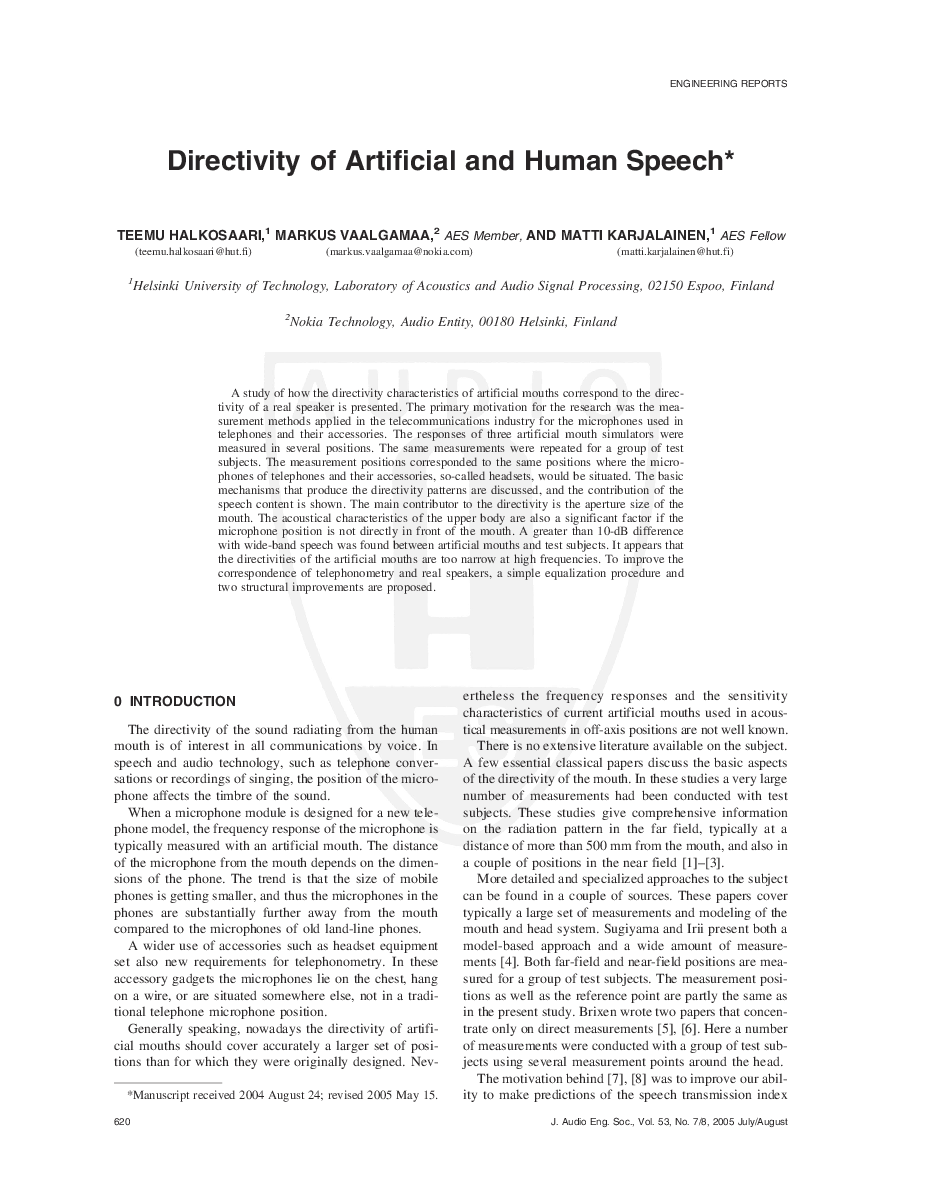Home / Publications / E-library page
You are currently logged in as an
Institutional Subscriber.
If you would like to logout,
please click on the button below.
Home / Publications / E-library page
Only AES members and Institutional Journal Subscribers can download
[Engineering Report] A study of how the directivity characteristics of artificial mouths correspond to the directivity of a real speaker is presented. The primary motivation for the research was the measurement methods applied in the telecommunications industry for the microphones used in telephones and their accessories. The responses of three artificial mouth simulators were measured in several positions. The same measurements were repeated for a group of test subjects. The measurement positions corresponded to the same positions where the microphones of telephones and their accessories, so-called headsets, would be situated. The basic mechanisms that produce the directivity patterns are discussed, and the contribution of the speech content is shown. The main contributor to the directivity is the aperture size of the mouth. The acoustical characteristics of the upper body are also a significant factor if the microphone position is not directly in front of the mouth. A greater than 10-dB difference with wide-band speech was found between artificial mouths and test subjects. It appears that the directivities of the artificial mouths are too narrow at high frequencies. To improve the correspondence of telephonometry and real speakers, a simple equalization procedure and two structural improvements are proposed.
Author (s): Halkosaari, Teemu; Vaalgamaa, Markus; Karjalainen, Matti
Affiliation:
Helsinki University of Technology, Espoo, Finland; Nokia Technology, Helsinki, Finland
(See document for exact affiliation information.)
Publication Date:
2005-07-06
Import into BibTeX
Permalink: https://aes2.org/publications/elibrary-page/?id=13430
(390KB)
Click to purchase paper as a non-member or login as an AES member. If your company or school subscribes to the E-Library then switch to the institutional version. If you are not an AES member Join the AES. If you need to check your member status, login to the Member Portal.

Halkosaari, Teemu; Vaalgamaa, Markus; Karjalainen, Matti; 2005; Directivity of Artificial and Human Speech [PDF]; Helsinki University of Technology, Espoo, Finland; Nokia Technology, Helsinki, Finland; Paper ; Available from: https://aes2.org/publications/elibrary-page/?id=13430
Halkosaari, Teemu; Vaalgamaa, Markus; Karjalainen, Matti; Directivity of Artificial and Human Speech [PDF]; Helsinki University of Technology, Espoo, Finland; Nokia Technology, Helsinki, Finland; Paper ; 2005 Available: https://aes2.org/publications/elibrary-page/?id=13430